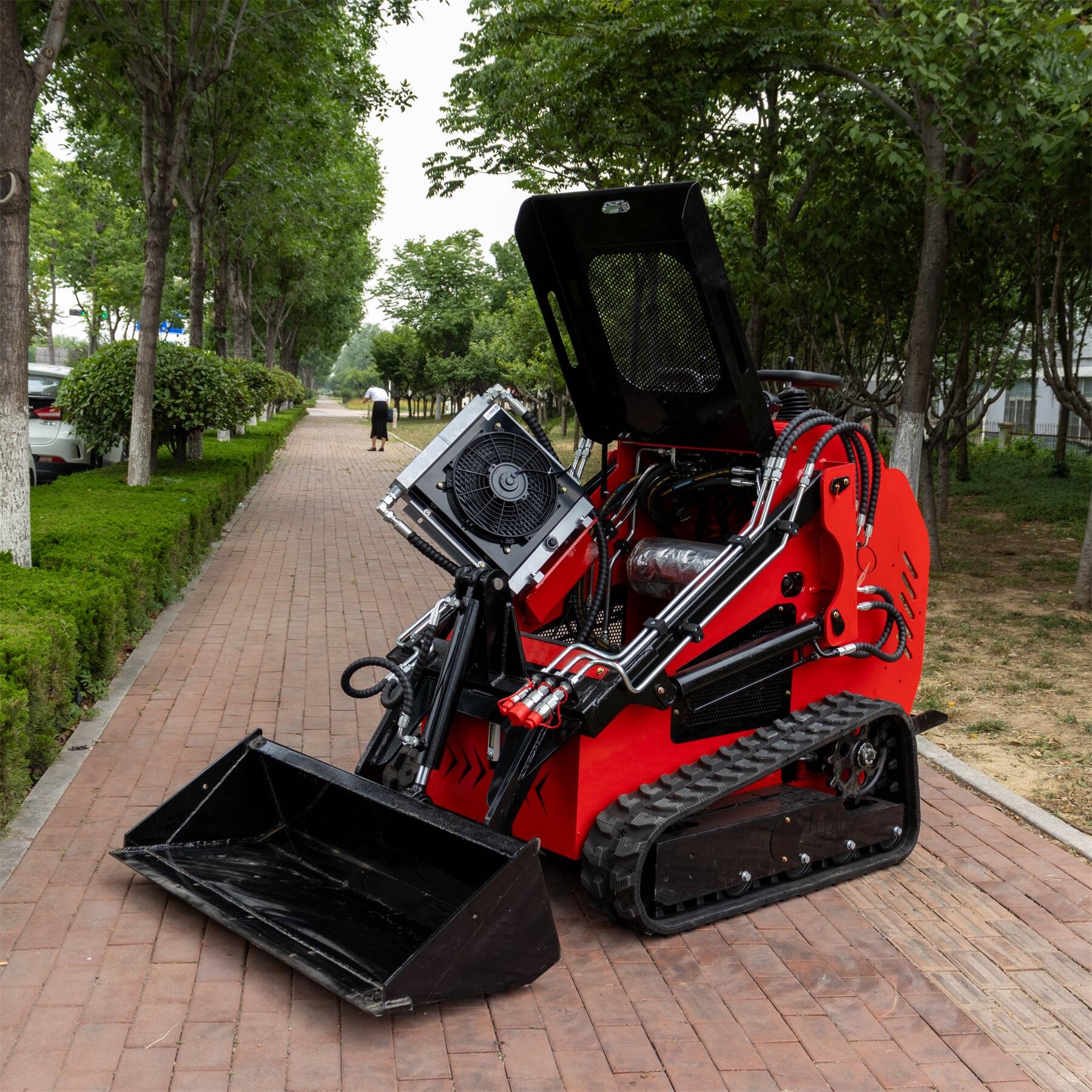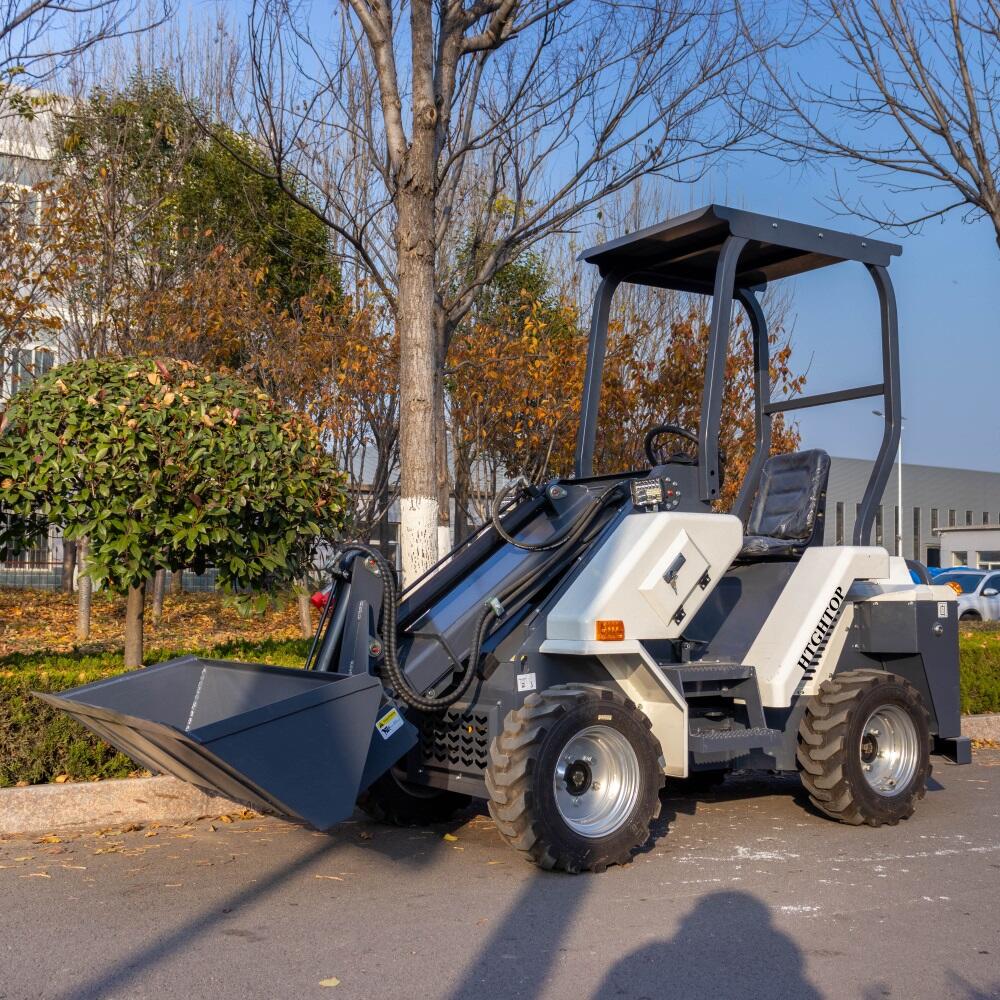Exploring Versatility: Crawler Skid Steer Loaders in Modern Construction
Essential Features of Modern Crawler Skid Steer Loaders
High-Performance Diesel Engines
Modern crawler skid steer loaders are often equipped with high-performance diesel engines, offering a range of horsepower ratings from 50 HP to over 100 HP. These powerful engines enhance the machine's ability to perform demanding tasks efficiently. The engine's efficiency significantly impacts fuel consumption, thus affecting operational costs; efficient engines help reduce fuel expenses, providing a cost-effective solution for long-term use. Moreover, compliance with emissions standards such as the EPA Tier 4 is critical, as it not only adheres to environmental guidelines but also influences purchasing decisions. Users prefer machines that align with these standards to ensure compliance with legal and ecological responsibilities.
Rubber Track Systems for Terrain Adaptability
The integration of rubber track systems in crawler skid steer loaders provides enhanced traction and protects the ground from damage. This system is beneficial in minimizing soil disturbance, making it ideal for diverse terrains. The width and pattern of the tracks play a crucial role in determining the loader’s stability and soil impact. For example, broader tracks distribute weight more evenly, reducing pressure and preventing soil compaction. Industries such as landscaping and agriculture highly benefit from these features, as they require machines capable of navigating different textures without harming the environment.
Hydraulic Attachment Compatibility
Hydraulic attachment compatibility is a pivotal feature in optimizing a crawler skid steer loader's efficiency and versatility on-site. Common attachments like augers, grapples, and trenchers significantly enhance functionality by allowing one machine to perform multiple tasks effectively. To ensure optimal performance, it's vital that hydraulic flow rates match the specific requirements of each attachment. This compatibility extends the loader's utility, offering a cost-efficient solution for multitasking in construction and similar fields. By accommodating a wide array of attachments, these machines can seamlessly transition between operations, enhancing productivity and reducing the need for multiple pieces of equipment.
Top Crawler Skid Steer Loaders for Construction Efficiency
HT382T Skid Steer Loader: Rugged Powerhouse
The HT382T Skid Steer Loader is renowned for its robust performance in the most demanding environments. It is powered by a 23hp Kubota® diesel engine, ensuring reliable and potent performance even in challenging conditions. User testimonials often highlight the loader's ability to handle tough terrains with its wear-resistant tires or tracks and impressive hydraulic lifting system. Its compact design and resilient frame structure contribute significantly to its durability, making it ideal for rugged applications.
HT530T Skid Steer Loader: Compact Maneuverability
The HT530T Skid Steer Loader stands out for its compact design that allows seamless navigation through constrained spaces, making it a favorite in urban job sites. Boasting a high-power engine with low fuel consumption, it ensures cost-effective operations by significantly reducing fuel expenses. The HT530T's 360-degree rotation capability further enhances its agility and efficiency, as evidenced by numerous user reviews. Its ability to operate efficiently in tight areas makes it essential for tasks requiring sharp maneuverability.
HT-L28 Telescopic Arm: Precision Material Handling
Equipped with a telescopic arm, the HT-L28 Skid Steer Loader revolutionizes material handling by offering extended reach and precise load placement. This enhanced capability boosts operational efficiency by allowing operators to position loads accurately, thereby minimizing material waste. Projects across various industries have benefited from this technology, achieving improved work precision and reduced operational costs. The HT-L28's ability to adapt to diverse applications makes it an invaluable asset for intricate material handling demands.
Key Applications in Construction Projects
Land Clearing and Grading
Crawler skid steer loaders offer significant advantages in land clearing and grading tasks for construction projects. Their robust design and powerful engines make them ideal for efficiently preparing construction sites, minimizing time and labor costs. The efficiency of grading attachments, coupled with improved maneuverability, further enhances productivity. According to recent industry statistics, using skid steer loaders with grading attachments can reduce land clearing times by up to 30% compared to manual methods, showcasing their effectiveness and cost-saving potential.
Heavy Material Transport
Crawler skid steer loaders excel in heavy material transport, effectively handling various materials such as dirt, gravel, and debris. Their impressive lifting capacities and enhanced stability ensure safe and efficient transport of heavy loads. This strength is crucial in construction scenarios where reliable material handling improves project timelines. For example, using skid steers for heavy-duty material transport has proven successful in projects requiring fast-paced site preparations and efficient debris removal, underscoring their importance in construction operations.
Demolition with Specialized Attachments
Skid steer loaders equipped with specialized attachments like hydraulic hammers and concrete crushers are pivotal in demolition tasks. These attachments offer versatility, adapting the machine to various demolition needs while ensuring safety through features like load control and secure handling. Evidence shows that hiring skid steer loaders for demolition work can lead to cost efficiencies, particularly when compared to traditional methods. The compact design and advanced attachments reduce labor hours and project timelines, highlighting the economic benefits of using skid steers for demolition tasks.
Selecting the Best Crawler Skid Steer
Matching Capacity to Job Demands
Choosing the right crawler skid steer based on load capacity is crucial for optimizing job site efficiency. Evaluating the conditions of the site and types of loads is essential—whether it's removing heavy debris or transporting materials across uneven terrain. For instance, selecting a skid steer with an inadequate load capacity can lead to operational inefficiencies, such as increased work hours and potential equipment damage. Industry standards for load ratings provide a benchmark to ensure the selected machine can handle the intended workload safely and efficiently. Ensuring the right balance between the machine's power and its operating capacity aids in maintaining productivity while reducing wear and tear on the equipment.
Evaluating Track Durability
Evaluating track durability is a vital process when selecting a crawler skid steer, as it directly affects performance and maintenance costs. Factors such as terrain type and operational environment significantly influence track wear and longevity. For instance, operating in rocky or abrasive conditions is likely to wear tracks faster than softer, smoother surfaces. Regular maintenance and timely replacements can mitigate these issues, but they come with their own cost implications. Data shows that track life expectancy can vary substantially across different models, with high-end durable tracks offering longer service life, reducing downtime, and minimizing replacement expenses. Therefore, considering track durability is imperative for cost-effective operation.
Operator Safety and Comfort Features
The integration of operator safety and comfort features in crawler skid steers is vital for enhancing productivity on the job site. Safety features such as the Rollover Protective Structure (ROPS) cab design and improved visibility are critical for preventing accidents and ensuring a safer working environment. Comfort features, including adjustable seating and climate control, significantly impact operator performance by reducing fatigue and increasing focus during long hours of operation. Industry statistics reveal that proper training combined with ergonomic features reduces safety incidents, highlighting the importance of investing in machines with superior comfort and safety measures. Prioritizing these aspects enhances overall job efficiency and operator satisfaction.




